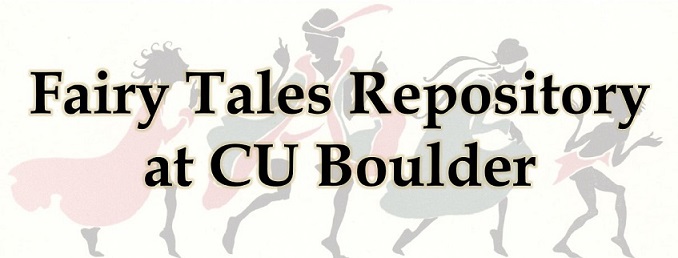Collected Item: “Grundtvig, Svendt. “The Princess in the Coffin.” Danish Fairy Tales, translated by J. Grant Cramer, Boston: The Four Seas Company, 1919, pp. 45-58.”
Full bibliographic citation (MLA)
Grundtvig, Svendt. “The Princess in the Coffin.” Danish Fairy Tales, translated by J. Grant Cramer, Boston: The Four Seas Company, 1919, pp. 45-58.
Title of the complete book/anthology (not a single chapter/fairy tale)
Danish Fairy Tales
The name of the author or editor of the complete book/anthology (leave blank if none are listed)
Svendt Grundtvig , translated by J. Grant Cramer
City where the book/anthology was published
Boston
The country where the book/anthology was published (use United States for US publications)
United States
The publisher of the book/anthology (as written on the title page)
The Four Seas Company
Date of publication (or date range from the library catalog, if no dates are listed in the book)
1919
The decade the book was published (use the drop down menu)
1910-1919
The fairy tale type (use the drop down menu)
Persecuted Maidens
The author of the fairy tale/chapter (leave blank if none is listed). If there is only an author for the whole book/anthology listed, use that author again for this entry
Svendt Grundtvig
What is special about this version of the tale?
In this thrilling rendition of a princess in a coffin, you witness a royal couples unusual venture for parenthood. A wicked prophecy is cast upon an unnaturally born princess, to which the King exhibits a lack of patience and is brought a great misfortune. The princess is revived but at a great cost to a vast collection of men. This version of the tale is not written for young readers, as it presents great horrors and a lack of illustrations to which a child would not be greatly entertained. It follows a similar plot path to many other Princess in a Chest Fairy tales, as the first version was Straparola’s tale of Tebaldo and Doralice.
A brief summary of the plot that highlights any unique variations
In this Danish rendition of a princess in a coffin, you observe a king and queen that are unable to naturally bear a child, so they must seek the help of a wise old woman to fulfill their desires. The queen becomes pregnant after she fulfills the prophecy and gives birth to a beautifully perfect princess who’s intellect is that of a grown wise man upon her birth. The child, however, has a curse and must not be seen by either parents until her 14th birthday or else there will be great misfortune brought upon their kingdom. The king cannot wait for such a lengthy amount of time to see his daughter, so on the day before her 14th birthday, he breaks into the room and the princess says he must pick one of three misfortunes. The king picks the lesser evil, and the following day the princess dies and is put into a wooden coffin. Upon her death, the princess insists that her coffin must be guarded by a guard every night until she awakes again, but every guard that is sent to guard the coffin mysteriously disappears and is never found again. Then a man comes along who against all odds agrees to guard the coffin once more. When the next dawn breaks, the people find him alive and well. He then demands an extraordinary amount of pay to proceed to guard the coffin for the next two days. Every night he attempts to escape, but a dwarf forcefully brings him back and gives him advice on how to remain alive. He then discovers that the princess’s ghost exits the coffin every night in an attempt to slay the guard. On the third night, the princess and the guard of the coffin are both alive and well on the next morning, and they get married and live happily ever after.
The original source of the fairy tale, if easily identifiable (Straparola, Basile, de Beaumont, Perrault, Grimm, etc.)
Straparola’s tale of Tebaldo and Doralice (Night 1, Tale 4)
A link to a digital copy of the book
https://archive.org/details/danishfairytales00gruniala/page/44/mode/2up
Your full name (this entry will not appear on the public site)
[private]
